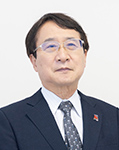Research progress on the role of sialic acid-binding immunoglobulin-like lectin 9 in various diseases
Vol 5, Issue 2.1, 2021
VIEWS - 41 (Abstract)
Abstract
Sialic acid-binding immunoglobulin-like lectin 9 (Siglec-9) is a receptor that expresses on the surface of immune cells. It plays an important role in the body’s immune response. Increased expression of Siglec-9 has been reported in infectious diseases, autoimmune diseases and cancer. Pathogenic microorganism and tumor cells can inhibit the recognition and killing of immune cells by upregulating their own specific sialic acid and binding with Siglec-9 on the surface of host immune cells, and suppress the release of pro-inflammatory cytokines and promote the release of anti-inflammatory cytokines, eventually leading to immunosuppression, tumor immune escape and the like. However, the immunosuppressive function of Siglec-9 may be advantageous for diseases such as neutrophil asthma and autoimmune diseases. Therefore, further research on the mechanism of action of Siglec-9 is of great significance.
Keywords
Full Text:
PDFReferences
- Varki A, Schnaar RL, Crocker PR. I-type lectins. New York: Cold Spring Harbor Laboratory Press; 2017. p. 453–467.
- Zhang J, Nicoll G, Jones C, et al. Siglec-9, a novel sialic acid binding member of the immunoglobulin superfamily expressed broadly on human blood leukocytes. Journal of Biological Chemistry 2000; 275 (29): 22121–22126.
- Foussias G, Yousef GM, Diamandis EP. Identification and molecular characterization of a novel member of the Siglec family (Siglec9). Genomics 2000; 67(2): 171–178.
- Grimwood J, Gordon LA, Olsen A, et al. The DNA sequence and biology of human chromosome 19. Nature 2004; 428(6982): 529–535.
- Crocker PR, Varki A. Siglecs, sialic acids and innate immunity. Trends in Immunology 2001; 22(6): 337–342.
- Crocker PR, Paulson JC, Varki A. Siglecs and their roles in the immune system. Nature Reviews Immunology 2007; 7(4): 255–266.
- Avril T, Floyd H, Lopez F, et al. The membrane-proximal immunoreceptor tyrosine-based inhibitory motif is critical for the inhibitory signaling mediated by Siglecs-7 and -9, CD33-related Siglecs expressed on human monocytes and NK cells. Journal of Immunology 2004; 173(11): 6841–6849.
- Macauley MS, Crocker PR, Paulson JC. Siglec-mediated regulation of immune cell function in disease. Nature Reviews Immunology 2014; 14(10): 653–666.
- Adams OJ, Stanczak MA, Von Gunten S, et al. Targeting sialic acid-Siglec interactions to reverse immune suppression in cancer. Glycobiology 2018; 28(9): 640–647.
- Angata T, Varki A. Cloning, characterization, and phylogenetic analysis of Siglec-9, a new member of the CD33-related group of Siglecs: Evidence for co-evolution with sialic acid synthesis pathways. Journal of Biological Chemistry 2000; 275(29): 22127–22135.
- Khatua B, Bhattacharya K, Mandal C. Sialoglycoproteins adsorbed by Pseudomonas aeruginosa facilitate their survival by impeding neutrophil extracellular trap through Siglec-9. Journal of Leukocyte Biology 2012; 91(4): 641–655.
- Ono E, Uede T. Implication of soluble forms of cell adhesion molecules in infectious disease and tumor: Insights from transgenic animal models. International Journal of Molecular Sciences 2018; 19(1): 239.
- Carlin AF, Uchiyama S, Chang YC, et al. Molecular mimicry of host sialylated glycans allows a bacterial pathogen to engage neutrophil Siglec-9 and dampen the innate immune response. Blood 2009; 113(14): 3333–3336.
- Jandus C, Boligan KF, Chijioke O, et al. Interactions between Siglec-7/9 receptors and ligands influence NK cell-dependent tumor immunosurveillance. Journal of Clinical Investigation 2014; 124(4): 1810–1820.
- Ikehara Y, Ikehara SK, Paulson JC. Negative regulation of T cell receptor signaling by Siglec-7 (p70/AIRM) and Siglec-9. Journal of Biological Chemistry 2004; 279(41): 43117–43125.
- Aalto K, Autio A, Kiss EA, et al. Siglec-9 is a novel leukocyte ligand for vascular adhesion protein-1 and can be used in PET imaging of inflammation and cancer. Blood 2011; 118(13): 3725–3733.
- Saito M, Yamamoto S, Ozaki K, et al. A soluble form of Siglec-9 provides a resistance against Group B Streptococcus (GBS) infection in transgenic mice. Microbial Pathogenesis 2016; 99: 106–110.
- Tomioka Y, Morimatsu M, Nishijima K, et al. A soluble form of Siglec-9 provides an antitumor benefit against mammary tumor cells expressing MUC1 in transgenic mice. Biochemical and Biophysical Research Communications 2014; 450(1): 532–537.
- Yu H, Gonzalez-Gil A, Wei Y, et al. Siglec-8 and Siglec-9 binding specificities and endogenous airway ligand distributions and properties. Glycobiology 2017; 27(7): 657–668.
- Jia Y, Yu H, Fernandes SM, et al. Expression of ligands for Siglec-8 and Siglec-9 in human airways and airway cells. Journal of Allergy and Clinical Immunology 2015; 135(3): 799–810.
- Zeng Z, Li M, Wang M, et al. Increased expression of Siglec-9 in chronic obstructive pulmonary disease. Scientific Reports 2017; 7(1): 10116.
- Ishii T, Angata T, Wan E S, et al. Influence of SIGLEC9 polymorphisms on COPD phenotypes including exacerbation frequency. Respirology 2017; 22(4): 684–690.
- Mcmillan SJ, Sharma RS, Mckenzie EJ, et al. Siglec-E is a negative regulator of acute pulmonary neutrophil inflammation and suppresses CD11 β2-integrin-dependent signaling. Blood 2013; 121(11): 2084–2094.
- Mcmillan SJ, Sharma RS, Richards HE, et al. Siglec-E promotes β2-integrin-dependent NADPH oxidase activation to suppress neutrophil recruitment to the lung. Journal of Biological Chemistry 2014; 289(29): 20370–20376.
- Kuol N, Stojanovska L, Nurgali K, et al. The mechanisms tumor cells utilize to evade the host’s immune system. Maturitas 2017; 105: 8–15.
- Jandus C, Boligan KF, Chijioke O, et al. Interactions between Siglec-7/9 receptors and ligands influence NK cell-dependent tumor immunosurveillance. The Journal of Clinical Investigation 2014; 124(4): 1810–1820.
- Mu C, Huang J, Chen Y, et al. High expression of PD-L1 in lung cancer may contribute to poor prognosis and tumor cells immune escape through suppressing tumor infiltrating dendritic cells maturation. Medical Oncology 2011; 28(3): 682–688.
- Lubli H, Pearce OMT, Schwarz F, et al. Engagement of myelomonocytic Siglecs by tumor-associated ligands modulates the innate immune response to cancer. Proceedings of the National Academy of Sciences 2014; 111(39): 14211–14216.
- Cohen M, Elkabets M, Perlmutter M, et al. Sialylation of 3-methylcholanthrene-induced fibrosarcoma determines antitumor immune responses during immunoediting. Journal of Immunology 2010; 185(10): 5869–5878.
- Pearce OM, Laubli H. Sialic acids in cancer biology and immunity. Glycobiology 2016; 26(2): 111–128.
- Tanida S, Akita K, Ishida A, et al. Binding of the sialic acid-binding lectin, Siglec-9, to the membrane mucin, MUC1, induces recruitment of beta-catenin and subsequent cell growth. Journal of Biological Chemistry 2013; 288(44): 31842–31852.
- Macao B, Johansson DG, Hansson GC, et al. Autoproteolysis coupled to protein folding in the SEA domain of the membrane-bound MUC1 mucin. Nature Structural Molecular Biology 2006; 13(1): 71–76.
- Gendler SJ. MUC1, the renaissance molecule. Journal of Mammary Gland Biology and Neoplasia 2001; 6(3): 339–353.
- Fraschilla I, Pillai S. Viewing Siglecs through the lens of tumor immunology. Immunological Reviews 2017; 276(1): 178–191.
- Wang X, Liu D, Ning Y, et al. Siglec-9 is upregulated in rheumatoid arthritis and suppresses collagen-induced arthritis through reciprocal regulation of Th17-/Treg-cell differentiation. Scandinavian Journal of Immunology 2017; 85(6): 433–440.
- Matsumoto T, Takahashi N, Kojima T, et al. Soluble Siglec-9 suppresses arthritis in a collagen-induced arthritis mouse model and inhibits M1 activation of RAW264.7 macrophages. Arthritis Research & Therapy 2016; 18(1): 133.
- Virtanen H, Autio A, Siitonen R, et al. 68Ga-DOTA Siglec-9-a new imaging tool to detect synovitis. Arthritis Research & Therapy 2015; 17(1): 308.
- Thornhill SI, Mak A, Lee B, et al. Monocyte Siglec-14 expression is upregulated in patients with systemic lupus erythematosus and correlates with lupus disease activity. Rheumatology 2017; 56(6): w498.
- Liu Y, Zou X, Chai Y, et al. Macrophage polarization in inflammatory diseases. International Journal of Biological Sciences 2014; 10(5): 520–529.
- Liu Y, Yu M, Chai Y, et al. Sialic Acids in the Immune Response during Sepsis. Frontiers in Immunology 2017; 8: 1601.
- Chen G, Brown NK, Wu W, et al. Broad and direct interaction between TLR and Siglec families of pattern recognition receptors and its regulation by Neu1. Elife 2014; 3: e4066.
- Wu Y, Ren D, Chen G. Siglec-E negatively regulates the activation of TLR4 by Controlling its endocytosis. Journal of Immunology 2016; 197(8): 3336–3347.
- Ando M, Tu W, Nishijima K, et al. Siglec-9 enhances IL-10 production in macrophages via tyrosine-based motifs. Biochemical and Biophysical Research Communications 2008; 369(3): 878–883.
- Chu S, Zhu X, You N, et al. The fab fragment of a human anti-Siglec-9 monoclonal antibody suppresses LPS-induced inflammatory responses in human macrophages. Frontiers in Immunology 2016; 7: 649.
- Wessels MR, Rubens CE, Benedi VJ, et al. Definition of a bacterial virulence factor: Sialylation of the group B streptococcal capsule. Proceedings of the National Academy Sciences USA 1989; 86(22): 8983–8987.
- Zou Z, Chastain A, Moir S, et al. Siglecs facilitate HIV-1 infection of macrophages through adhesion with viral sialic acids. PLoS One 2011; 6(9): e24559.
- Zhao D, Jiang X, Xu Y, et al. Decreased Siglec-9 expression on natural killer cell subset associated with persistent HBV replication. Frontiers in Immunology 2018; 9: 1124.
DOI: https://doi.org/10.24294/ti.v5.i2.1.1366
Refbacks
- There are currently no refbacks.
Copyright (c) 2021 Ling Cao, Xiaoliang Yuan

This work is licensed under a Creative Commons Attribution-NonCommercial 4.0 International License.
This site is licensed under a Creative Commons Attribution 4.0 International License.












